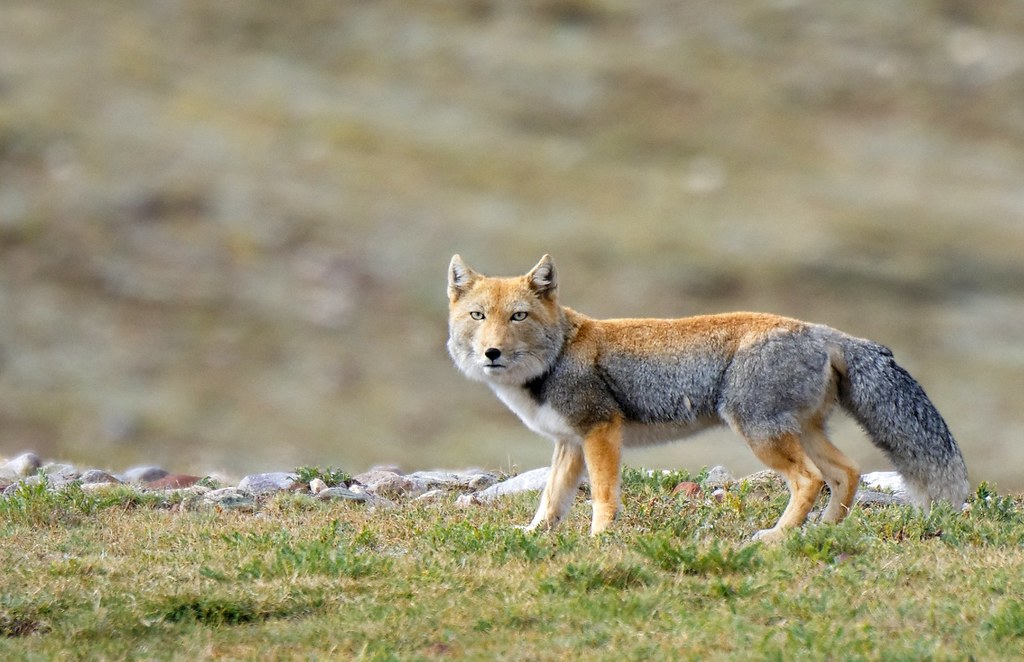#sgang
Audio
(via Formationer På Gyldne Græsgange | Sebastian Bruun | Forlaget Kornmod)
0 notes
Photo

SGang Gwaay means Remains of houses. This place is very much known for illustrating the lives, culture and traditions of the local people who lived there. It also elaborates the art and way of life of the Haida People. And thus allowing the people to get deep into their lives.Read More... https://bit.ly/3CrYkZa#sgang #gwaay #illustrating #abandoned #village #ninstints #tour #world #indiaimagine #travelphotography #travelgram #blogger #travelblogger #travelinggram #traveltheglobe #travelalone #travelmoments #blog #travellust #blogtour #photooftheday #picoftheday #lifestyle
1 note
·
View note
Photo

AU where everything is the same but Crowley adopts every abandoned reptilian and amphibian pet he finds



#good omens#crowley#aziraphale#ineffable husbands#the sgang#i have 0 imagination sometimes#but the gang's all here#my stuff#my stuff: go#btw i started watching Merlin#if these two don't bone by the end of the series i am gonna start a big riot#My art
7K notes
·
View notes
Photo

Happy Easter love 🐣🛍
#happy easter#my love#amore mio#erba#good weed#weed#i love weed#lettera#fattoni#fattanza#fattanza in abbondanza#sgang#regali#rizla#papers#rizla papers#marlboro
352 notes
·
View notes
Photo

Haida Totem Poles in SG̱ang Gwaay (Ninstints), British Columbia, Canada
SG̱ang Gwaay (also known in English as Ninstints) is a historic village site that contains many large wooden totem poles carved by the Haida people. The Haida are an indigenous people of the Americas who have lived for at least 13,000 years in the Haida Gwaii archipelago off the western coast of Canada. The totem poles in the village of SG̱ang Gwaay were made as family emblems, but the village was abandoned in the 19th century after a smallpox epidemic severely reduced the population.
4 notes
·
View notes
Text
ETERNALS SPOILERS
Marvel forehead touches:
Nat and Yelena
Nat and Clint
Shang-Chi and Wenwu
Sgang-Chi and Ying-Li
Sersi and Ikarus
Druig and Makkari
My point is, with one exception, the forehead touch has come just before the death of one person involved in it. So if Druig and Makkari don't get to live happily ever after in the next movies, I will riot.
#the eternals spoilers#the eternals#eternals spoilers#eternals#druig#makkari#Shang-Chi#natasha romanoff#black widow#marvel#spoilers#mcu
39 notes
·
View notes
Video
Tibetan Sand Fox, Tibet 2017 by © Jan Reurink
Via Flickr:
Tibetan name Wha or Wamo,ཝ། . The Tibetan Sand Fox is one of the smaller fox species. It has thick, soft fur that protects it from the winds of the high mountains, with a dense undercoat that is brown to rusty yellow in color. The fur on the upper flanks is rusty, whereas the lower flanks and rump is colored gray, sometimes producing the illusion of a line along the animal's flank. The lower part of its ruff, as well as its throat, chest, and abdominal region is white. Small black patches on the shoulders set off the white chest.The tip of the tail is white. Adult Tibetan foxes are 60 to 70 centimetres (24 to 28 in) from head to body (juveniles are somewhat smaller) and a tail length of 29 to 40 centimetres (11 to 16 in). Weights of adults are usually 4 to 5.5 kilograms (8.8 to 12 lb). The Tibetan Sand Fox has a unique face that appears square; this is an illusion created by its large ruff. As seen in the Planet Earth episode "Great Plains", the fox keeps its body stiff and its head level when stalking. en.wikipedia.org/wiki/Tibetan_Sand_Fox
#Tibet བོད#བོད་ལྗོངས།#2017#༢༠༡༧་#©Jan Reurink#Tibetan Plateau བོད་མཐོ་སྒང་bötogang#Tibet Autonomous Region#T.A.R.#Damzhung འདམ་གཞུང་། county#Vulpes-ferrilata#Tibetansand-fox#Wa/ Wha/ Wamo ཝ།#male fox ཝ་ཕོ wapo#Tibetan Wildlife#Nam Tso གནམ་མཚོ།#rodent རི་བོང་དང་སྲེ་མོང་གི་རིགས་ལའང་ཟེར་ ri bong dang sre mong gi rigs la'ang zer#wild animals རི་སྐྱེས་སྲོག་ཆགས rikyé sokchak#Tibetan Plateau Mammals མཐོ་ སྒང་གི་ གི་ གི་ འོ་འཐུང་སྲོག་ཆགས་ mtho sgang gi gi 'o 'thung srog chags
2 notes
·
View notes
Text
Imagine reconnecting with your sister Xialing:

You almost didn't recognize her.
The baby sister you hadn't seen in over a decade, all grown up. She'd knocked the wind from you. You were still struggling to catch your breath when she left you there, on the ground. You looked at your brother and Katy, the two of them thinking the same thing. When you could you ran after her, all three of you. You called her name, the same name you hadn't said in a long time. Forever. She didn't look back. She didn't say a word. She just kept moving through the crowds without effort, dodging you, your cries. Why was she here? Where has she learned to fight like that?
When you grabbed her arm, she reacted as if you'd stabbed her. Maybe you had, a long time ago. Xialing was so little when you and Sgang left. You'd always regretted leaving her behind like that, but you had no other choice. You didn't know, in uour absence, she learned from watching. Your father, almost too eager to teach you and Shang how to kill, refused when it came to her. So, she taught herself. She became the best, and when the time came, she left too. A family of five was down to one. She hated you and Shang for leaving her, there was no hiding that, even now.
"Xialing, I'm sorry."
24 notes
·
View notes
Photo

From Shadow to Light: Gagiid
April White
From the website:
Gagiid—One Carried Away, is a Human Being whose spirit is too strong to die. After his canoe capsizes in tempestuous winter seas, he narrowly escapes drowning. Swimming ashore in a hypothermic state his skin takes on a deathly pallor while his body strengthens by transmogrifying his human form with Otter. In this state, Gagiid is Wild Man, a powerful Supernatural Being, who is equally at home in water and on land.
Dangerous and with a predilection for terrifying vulnerable souls, children are taught to be wary of him and not be tricked by his great powers of illusion and camouflage. Since contact with the Yaatz xaa.adee—The Iron People to the present, Gagiid continues to weave his way from shadow to light, exemplifying the Haidas’ intrinsic link to the natural world—the nucleus of their cultural past.
He lurks under the moss on the ledge of a rock corridor on SGang Gwaay, Gwaii Haanas, ready to demonstrate, through frightening us, our profound connection to the land and sea and be watchful to preserve the precarious balance in which we live.
9 notes
·
View notes
Text
Indigenous residents and ecologists combat the harmful introduced species - Sitka deer - to safeguard the dense old-growth rainforest and biodiversity of Haida Gwaii
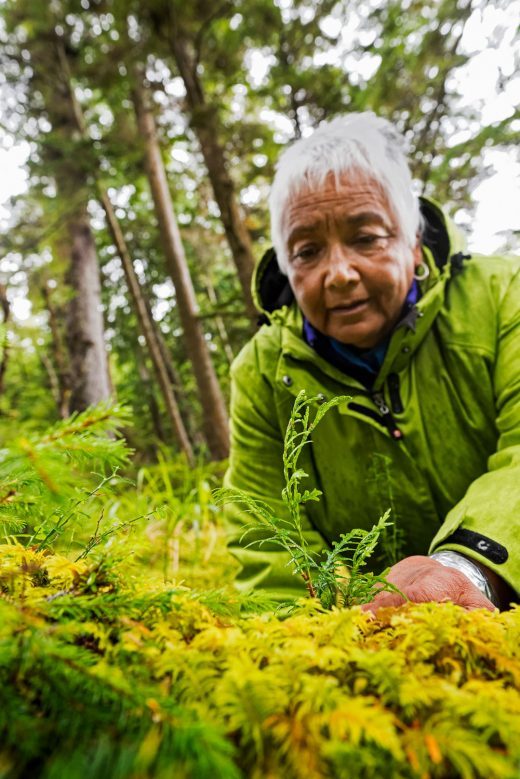
Caption by Leslie Anthony: “Barb Wilson is a Haida cultural plant expert. Photo courtesy of Parks Canada.”

A Sitka deer on Ramsay Island, Haida Gwaii. The Sitka deer is an introduced species on the archipelago, which disrupts the natural forest ecology. Photo by Andrew S. Wright and Parks Canada.
These are some scenes depicting the impact of a harmful introduced species - Sitka deer - on the incredible archipelago of Haida Gwaii, a mesmerizing land with substantial Indigenous cultural autonomy and characterized by dense rainforest, rich coastal seas, and kelp forest.
Sitka deer, a subspecies of mule deer, are endemic to the perhumid temperate rainforest of southeastern Alaska and the coastal rainforest on British Columbia’s mainland coast. Indigenous people on Haida are largely autonomous relative to the provincial government’s rule over most of mainland British Columbia; thus, traditional ecological knowledge is utilized in novel solutions to protecting old-growth forest from the excessive foraging/browsing of the Sitka deer.
[Many captions here are provided by Canadian journalist Leslie Anthony, who compiled some of these photos as part of her various published articles on land management in Haida Gwaii.]
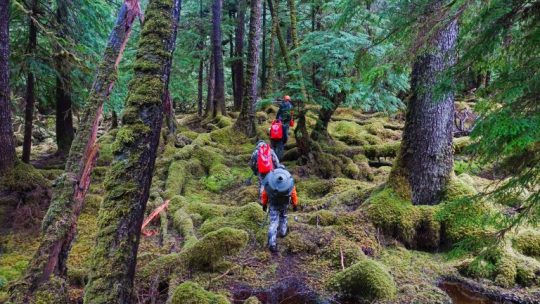
Leslie Anthony: “Members of the Restoring Balance team hike bait stations onto Ramsay Island, British Columbia. The stations will be baited with apples, corn, and cedar boughs to lure deer close to hunters. Photo courtesy of Parks Canada.”
-
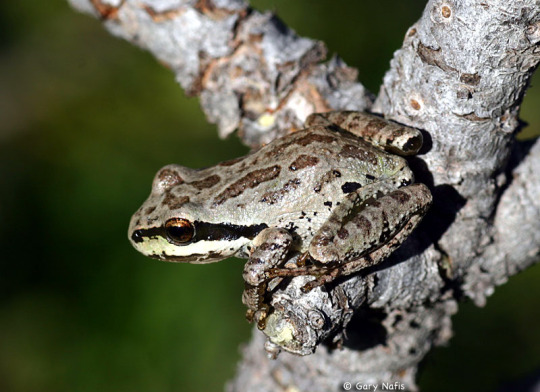
The Pacific treefrog (Pseudacris regilla) is also an introduced species on Haida Gwaii. Photo by Gary Nafis..
-

Anthony: “Browsing by invasive deer at Haida village sites has resulted in meadow-like conditions, shown here at SGang Gwaay, British Columbia. Most of the remains of historical village sites on islands without deer are hidden by vegetation. Photo by Gunter Marx/Alamy Stock Photo.”
-

Anthony: “Expert hunters from New Zealand and dogs outfitted with GPS collars land on an island in Haida Gwaii to help remove invasive deer. Photo courtesy of Parks Canada.”
-
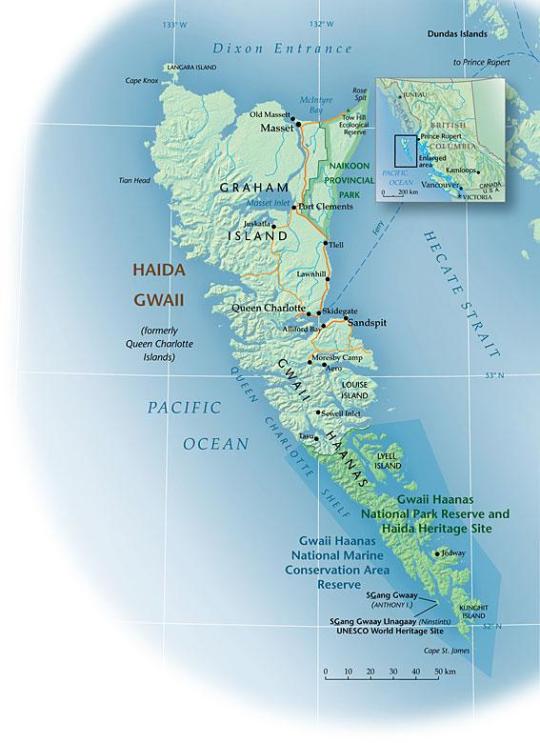
Map of Haida Gwaii, by Steven Fick of Canadian Geographic.
-
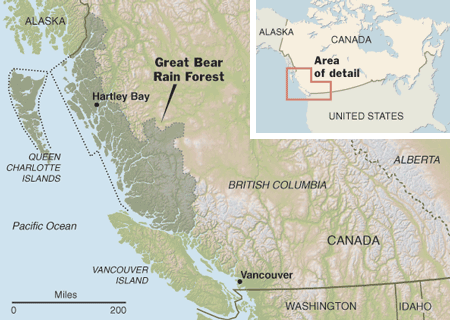
A map of the rainforest of coastal British Columbia, including Haida Gwaii, via New York Times.
-

The distribution range of 7 subspecies of mule deer. The Sitka deer is endemic to the far northern coast of the Pacific Northwest, from the central British Columbia mainland coast to Kodiak Island. Map by Wikipedia user Cephas.
-
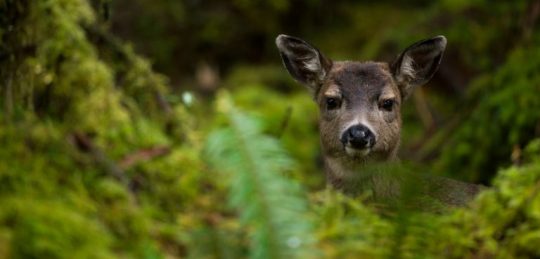
Anthony: “Sitka black-tailed deer have been introduced to Haida Gwaii, British Columbia, at least six times since 1878. Without natural predators, the deer have devastated the archipelago’s vegetation. Photo by Nick Trehearne/Getty Images.”
-



Excerpts from Anthony’s piece for Canadian Geographic: Haida rising - A new marine reserve on Haida Gwaii reflects the vital bonds between land and sea and renews hopes for an ecologically and economically sustainable future. 1 April 2010.
-

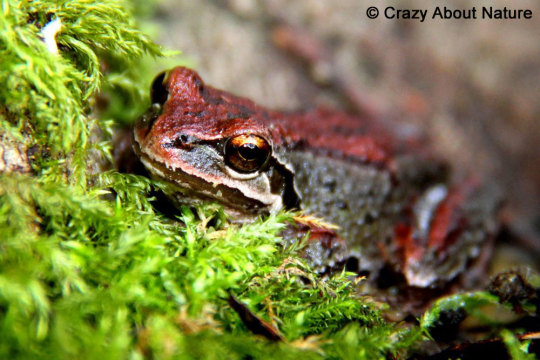
Pacific treefrogs were also introduced to Haida Gwaii. The species is endemic to the coastal Pacific Northwest, between northern California and Vancouver Island. (Photos courtesy of Gary Nafis and California Herps.)
-
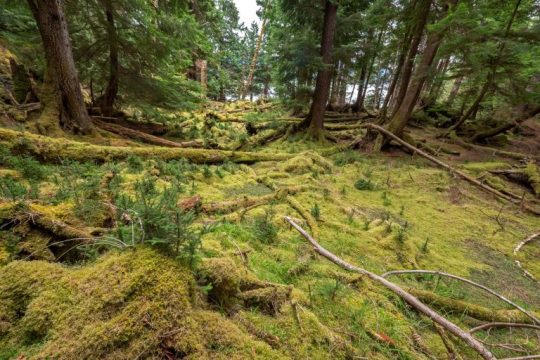
Anthony: “Continual pruning by deer keeps small conifers, such as the ones shown here in the foreground, perpetually stunted. Photo by Grant Callegari.”
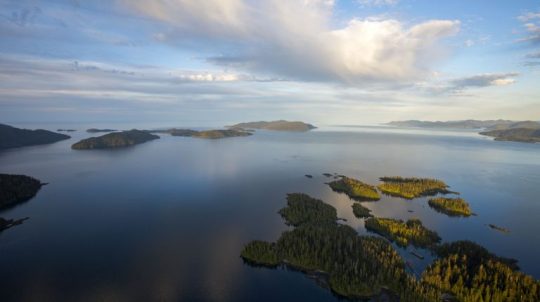
“Islands in Juan Perez Sound, Haida Gwaii, are at the heart of the Restoring Balance Project of Gwaii Haanas National Park Reserve, National Marine Conservation Area Reserve, and Haida Heritage Site. Photo by Joe Crawford/Braid Films/Parks Canada.“
#i am of course obsessed with temperate rainforest#and haida gwaii is of course a great example of the use of indigenous/traditional ecological knowledge for land management
13 notes
·
View notes
Video
youtube
S.GANG – ZÉPO Découvrez le clip vidéo des S.GANG réalisé par JOKO avec le titre "Zépo"
0 notes
Photo

You Either Wit Me Or Against Me!!! Cause We’re I’m from Its RICH ROLL Or Get ROLL’D On!!!! Just BlowiN GOoD Buds Patiently Awaiting my Return #CrenshawRaisedMe #SaviLaww #SGang #thrasher #LosAngeles #OUTLAW (at Los Angeles, California) https://www.instagram.com/p/BuefJGUnAYQ/?utm_source=ig_tumblr_share&igshid=1tpoqft664dzj
0 notes
Photo

Documentary of a performance/installation near lha sgang https://www.instagram.com/p/CWDYJZvF8lb/?utm_medium=tumblr
1 note
·
View note
Photo

Maraming Salamat Shanghai SGang💕🍲💕 Love y’all 💋 (at The Cannery, Shanghai) https://www.instagram.com/p/CUSe7ybgm7kt0k79rJbMd7bvRClbtpNYMHy32g0/?utm_medium=tumblr
0 notes
Text
The Single Story of the Totem Pole

Contemporary totem poles by the Haida tribe in British Columbia (”Haida Totem Poles”). These poles feature interlocking figures with the limbs flat and stylized, following the ancient two-dimensional design system known today as formline design (”The Enduring Power of Totem Poles”).
I suggest reading my post on the cultural uses of red cedar before reading this one :)
As I mentioned in my post about the cultural uses of red cedar trees by Indigenous peoples of the Northwest Coast, totem poles are an iconic form Native American art made out of red cedar. In popular culture, totem poles are often seen as representations of the culture of Native peoples from the Pacific Northwest. Although totem poles were indeed important to some of the Indigenous peoples of the area, they have a complicated history that is entangled with European colonialism.
I’m going to guess that most people reading this will have seen a totem pole before, so I won’t spend too much time describing them. Totem poles are large posts carved out of cedar tree trunks, and there were many purposes for these free-standing poles. Poles could be used as historical monuments, clan markers, territory markers, wealth indicators, or to mark special events (Moss, 2011). Totem poles (especially more contemporary ones) can also be decorated with brightly colored paints, especially totem poles that were carved with clan crest animals (”The Enduring Power of Totem Poles”).
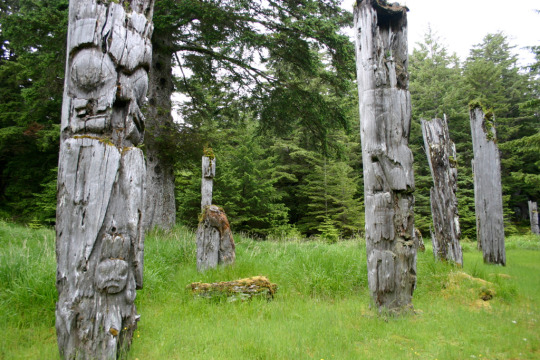
Photo of Totem Poles at Sgaang Gwaii (Brodieguy, 2008)
Most Indigenous peoples of the Pacific Northwest didn’t carve totem poles until well after European colonization of the region. The only tribes thought to craft free-standing totem poles before contact with European settlers are the Haida, Tlingit, and Tsimshian (Moss, 2011). The archaeological dating of totem poles is difficult because wood decays quickly, so the exact antiquity of the practice of totem pole creation is unknown (Moss, 2011). The Haida village of Sgaang Gwaii (also known as Ninstints) has a large collection of totem poles that are still located in their original positions in the village, where they function as mortuary poles for deceased chiefs (”The Enduring Power of Totem Poles”). The geographical region where the Haida lived pre-contact (the Queen Charlotte Islands) contained mega-forests of old-growth western red cedar trees, which allowed them to craft the large totem poles they are known for (”The Enduring Power of Totem Poles”). It was only in the 19th century that other tribes of the Northwest Coast began carving totem poles, and this practice was primarily driven by the demands of museums, private collectors, and tourism (which began the creation of miniature totem pole souvenirs).Very few totem poles remain in their original locations, and most of the poles in museums and art galleries are replicas of early totem poles (Moss, 2011).
The popular conceptions of the totem pole and its roles in the culture of Indigenous people of the Pacific Northwest highlight an important example of colonialism impacting the way natural resources were utilized by the people of the area. In my other posts, I have talked in detail about the complex relationships between people and their environments and how Indigenous people have manipulated their environments to their advantage. Totem poles serve as an example of the manipulation of Indigenous people by European settlers to manipulate their environment and utilize resources in new ways. In this post I’m not trying to say that totem poles are completely unimportant to most Indigenous people of the Northwest Coast because colonists economically pressured them into creating this type of art. Rather, I am aiming to highlight that the tradition of carving red cedar trees into totem poles should not be applied to all pre-contact peoples of the area, and that the management and use of resources by Indigenous people can have external influences outside of what is available to them in their environments.
References:
Brodieguy. (2008, June 25). Haida totems at SGang Gwaay llnagaay[Photograph found in Gwaii Haanas National Park, Haida Gwaii BC]. Retrieved from https://www.flickr.com/photos/brodieguy/6501167185 (Originally photographed 2008, June 25)
Haida Totem Poles[Photograph found in Stanley Park, British Columbia]. (n.d.). Retrieved from http://www.todayshomepage.com/explore-haida-totem-poles.html
Moss, M. L. (2011). Northwest coast: Archaeology as deep history. Washington D.C.: Society for American Archaeology.
The Enduring Power of Totem Poles - presented by the Bill Holm Center, Burke Museum. (n.d.). Retrieved from http://www.burkemuseum.org/static/totempoles/index.html
1 note
·
View note
Text
Canada - British Columbia 2
Canada – British Columbia 2
SGang Gwaay, a world heritage site
#culture #geography #science #world #life #art #education #writing #research #travel #holiday #books #knowledge #facts #nature #places #countries #cities #towns #villages #continents #tourism #vacation #entertainment #newspapers #magazines #canada #britishcolumbia #northamerica

View On WordPress
0 notes
